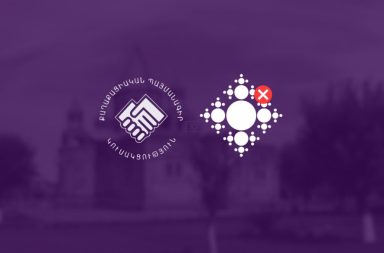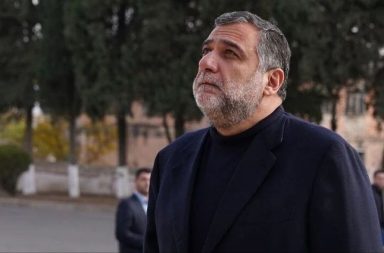by Davit Beglaryan
History is repeating itself in Armenia, and this time it is not Moscow pulling the strings—it is the Armenian government disgracing itself. Nearly a century ago, Bishop Artak Smbatyants was executed by Stalin’s henchmen. Today, Archbishop Mikael Ajapahyan sits in jail, not because of crimes, but because he dared to speak. The tools of repression have changed, but the mentality has not: silence the Church, break the conscience, preserve power.
Bishop Artak Smbatyants’s story is well known. In 1937, Soviet agents dragged him away, accused him of being an “enemy,” and shot him like a criminal. No trial, no justice, only murder carried out by a cowardly regime terrified of faith. The communists thought they were erasing him from history. Instead, his executioners are forgotten, their graves rotting, while a street in Gyumri now carries his name. He is remembered; they are despised.
In court today, political prisoner Archbishop Mikael Ajapahyan, head of the Shirak Diocese, compared his trial to the Stalin-era execution of Bishop Artak Smbatyants.
“Your records list my address on Bishop Smbatyants Street. He was the first head of the Shirak Diocese, executed… pic.twitter.com/cqqSM9Yo1g
— 301🇦🇲 (@301arm) August 18, 2025
And yet, in 2025, Armenia’s rulers are repeating the same shame. Archbishop Mikael Ajapahyan, head of the Shirak Diocese, has been caged on absurd charges of “calling for power seizure.” Let’s not mince words—this is a fabricated case, a show trial in the making. The government hides behind legal codes, but everyone sees what this is: a personal vendetta dressed up as law.
Unlike Smbatyants, Ajapahyan has not been shot—yet. Instead, the state is trying to humiliate him with hearings, detentions, and extensions of custody. The courts, spineless and obedient, play along. Judges read charges they don’t believe, prosecutors repeat accusations they cannot prove, and the machinery of “justice” grinds forward, not to protect the law, but to serve those in power. This is not a democracy. It is political revenge through the courts.
In court today, Ajapahyan himself reminded them of the parallel they are too afraid to face:
“Honorable court, you read my registered address: Bishop Smbatyants Street. I’m sure you didn’t ask yourselves—who was Bishop Smbatyants? He was the first leader of the Shirak Diocese. Arrested many times, finally shot by the infamous ‘troika’ in 1937. His executioners’ names are forgotten, their graves overgrown. But there is a street named after Bishop Smbatyants.
One day—if not today, in ten years—I will be justified. But you will remain guilty. Your children will be ashamed. I cannot understand what drives you to take part in this disgrace.”
That is the essence of Armenia’s tragedy: the Church remembers its martyrs, but the state keeps producing new ones. Smbatyants was executed by bullets; Ajapahyan is being crucified by courtrooms. Both are acts of fear by leaders too weak to face dissent.
The government can insist that this is different—that this is “law” and not “persecution.” But when the law is used to crush critics, it becomes no different than the barrel of a gun. A system that destroys voices of conscience is rotten, whether it wears the mask of Soviet communism or the costume of today’s so-called democracy.
The Church in Armenia has always stood as witness, as conscience, as the last voice that cannot be bribed or silenced. For the authorities to attack that voice is not just cowardice—it is national self-destruction. They are not only persecuting a bishop; they are mocking Armenia’s history, spitting on the sacrifices of those who came before.
Bishop Smbatyants’s executioners were forgotten because they stood on the wrong side of history. Ajapahyan’s jailers will suffer the same fate. Their names will vanish in disgrace, their children carrying the shame, while Ajapahyan—like Smbatyants before him—will endure in memory.
This is not governance. It is harassment. It is cowardice. It is the slow suicide of a state that prefers to jail its priests rather than listen to its people.
Ajapahyan is right: one day, he will be justified. The rulers of today will be remembered only for their weakness, their vindictiveness, and their fear. Armenia does not need new martyrs. But if the government continues down this road, it will create them—and bury itself in the process.


